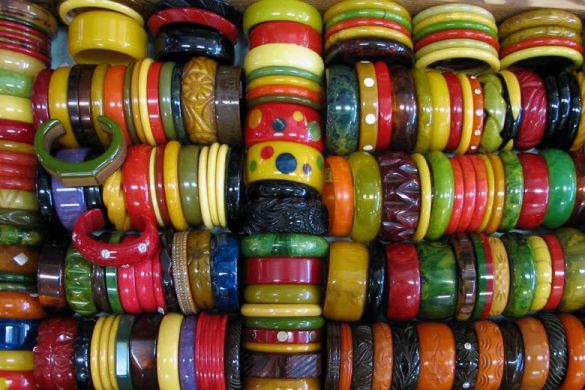How to Make Bakelite Jewellery

Bakelite is a kind of plastic made from synthetic components and is used widely for its electrical non-conductivity and heat resistant properties. Bakelite, also known as phenolic resin, was invented by a Belgian chemist L.H. Baekeland in 1907. It is mostly used in electrical insulators, radios, telephone casings, kitchenware and pipe stems. Because of its low cost and malleability, it is also used to make toys and traditional jewellery items.
Things Required:
– Polyurethane casting resin
– Resin dyes or tints
– Jewellery or rubber candy moulds
– Small paper cups
– Wooden stir sticks
– Soap/ dishwashing detergent
– Water
– Safety goggles
– Gloves
– Heat gun
– Hot glue gun
– Glue sticks
Instructions
-
1
The first step in making your own Bakelite jewellery is to prepare the mould. Clean your jewellery mould thoroughly with a mild soapy solution before rinsing and drying it. If you are using a non-silicon mould, spray it with a solution called “quick release” which you can easily find at your nearest craft store. This spray will keep the jewellery piece from sticking to the mould and allow the end product to come out easily.
-
2
Prepare the plastic resin following the manufacturer’s instructions. Polyurethane resin usually comes in liquid form with a hardening agent. Mix the resin and hardening agent in a small paper cup, using a wooden stirring stick. To know the exact ratio of resin and hardening agent, consult the manufacturer’s manual, since each brand requires different ratios.
-
3
Add a resin dye of your choice to the mixture and stir it to evenly mix the colour. Do not overwork the mixture however - it may cause the resin to set more quickly.
-
4
Pour the mixture into already prepared moulds. Bubbles may form in the resin when pouring, and need to be smoothed out with the help of a heat gun.
-
5
Your resin will be ready to remove from the mould when it is no longer tacky. To speed up the curing process, place your mould under a lamp with a low-watt bulb.
-
6
Your resin should come out of the mould quite comfortably; however, if you face a problem, place the mould in the freezer for a few minutes.
-
7
Use these resin pieces to form different jewellery items, like bracelets, necklaces, earrings etc. For hand-made style jewellery pieces, glue the resin pieces to pre-made earring posts, rings and other such frames.







